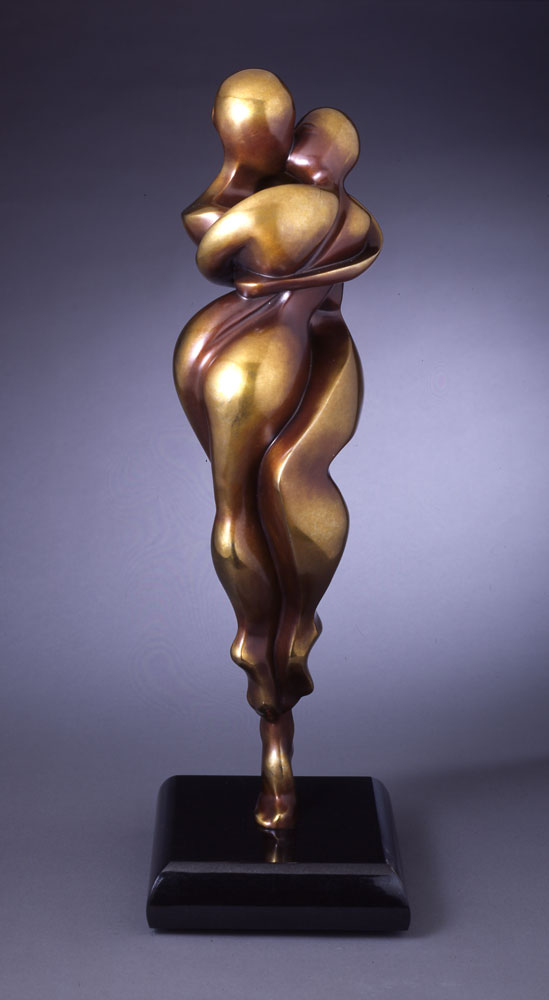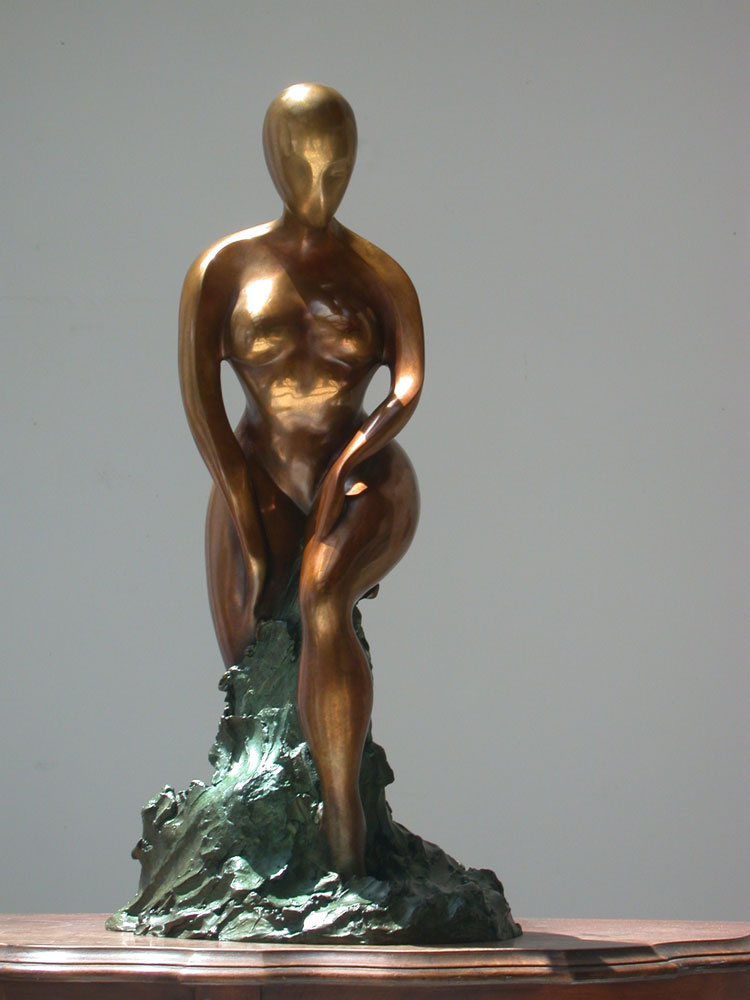Sculpture
“BALANCE OF THE SOUL”
Shray’s bronze sculptures are more than inanimate works of art. The bronze sculptors’ graceful forms reach out with emotion that touches and moves people- sometimes to tears. Although there is nothing quite as powerful as being in the physical presence of fine sculpture, you are invited to stroll Shray’s online gallery to view work that critics and collectors alike call “moving and timeless.”
Please click on the buttons to the left of your screen to enter and enjoy the online collection.
— BY SUSAN HALISTEN MCGARRY
“At 15, I discovered Winged Victory. Right then I knew I had to become a sculptor.”
SHRAY
” ‘The real meaning of things’ is a phrase that cuts to the chase of Shray’s figural sculptures. “
In her most recent works, she has simplified her human forms, reducing them to soft planes, sensual curves and sinuous lines. To create them she doesn’t build her forms, rather she carves into blocks of wet clay, finding the forms within, much as a carver chips away at a block of marble.
“My current sculptures begin with the spine line,” she explains. “I see it in the block of clay, draw it in with my index finger and then begin pulling away the clay. I adhere to that line throughout the entire sculpting process. Everything relates to the line as it courses in and out of the highlights and shadows, as it moves across the positive forms and deep undercuts, and as new lines appear and disappear. My goal is to make sure that the lines encounter no flat spots, which would distract from the lines’ perfection.”
Shray attributes her arrival at this exhilarating point in her career to a lifetime of mentoring. “From childhood on, my mother exposed me to great painters and sculptors such as Rodin, Giacometti and Henry Moore,” she recalls. “She encouraged me to learn the fundamentals so I could find my own way. My teacher Patrick Haberman at the San Francisco Academy of Art grounded me in classical anatomy and color theory. When I sculpt the front of a leg or a hand, I don’t have to see the back because I innately know where the joints, ligaments and muscles come together. And Piero Mussi, founder of Artworks Foundry, gave me free reign to learn all aspects of bronze casting. He taught me that the best sculptures do not fight the flow of liquid metal. When the flow is right, the bronze fits the form of the sculpture like a glove.”
Until you touch a sculpture, You don’t really know the piece.













